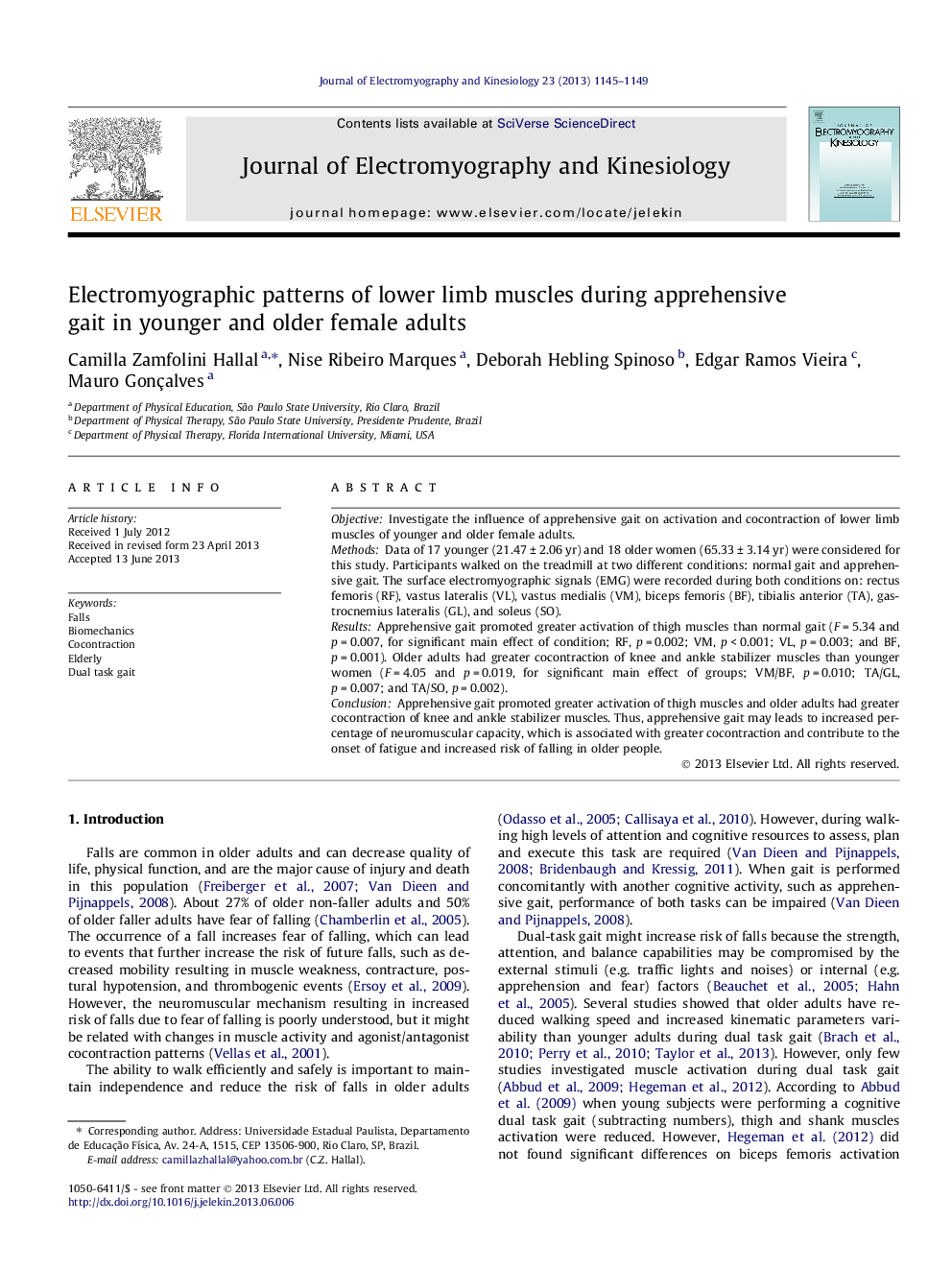| Article ID | Journal | Published Year | Pages | File Type |
|---|---|---|---|---|
| 6210547 | Journal of Electromyography and Kinesiology | 2013 | 5 Pages |
ObjectiveInvestigate the influence of apprehensive gait on activation and cocontraction of lower limb muscles of younger and older female adults.MethodsData of 17 younger (21.47 ± 2.06 yr) and 18 older women (65.33 ± 3.14 yr) were considered for this study. Participants walked on the treadmill at two different conditions: normal gait and apprehensive gait. The surface electromyographic signals (EMG) were recorded during both conditions on: rectus femoris (RF), vastus lateralis (VL), vastus medialis (VM), biceps femoris (BF), tibialis anterior (TA), gastrocnemius lateralis (GL), and soleus (SO).ResultsApprehensive gait promoted greater activation of thigh muscles than normal gait (F = 5.34 and p = 0.007, for significant main effect of condition; RF, p = 0.002; VM, p < 0.001; VL, p = 0.003; and BF, p = 0.001). Older adults had greater cocontraction of knee and ankle stabilizer muscles than younger women (F = 4.05 and p = 0.019, for significant main effect of groups; VM/BF, p = 0.010; TA/GL, p = 0.007; and TA/SO, p = 0.002).ConclusionApprehensive gait promoted greater activation of thigh muscles and older adults had greater cocontraction of knee and ankle stabilizer muscles. Thus, apprehensive gait may leads to increased percentage of neuromuscular capacity, which is associated with greater cocontraction and contribute to the onset of fatigue and increased risk of falling in older people.
